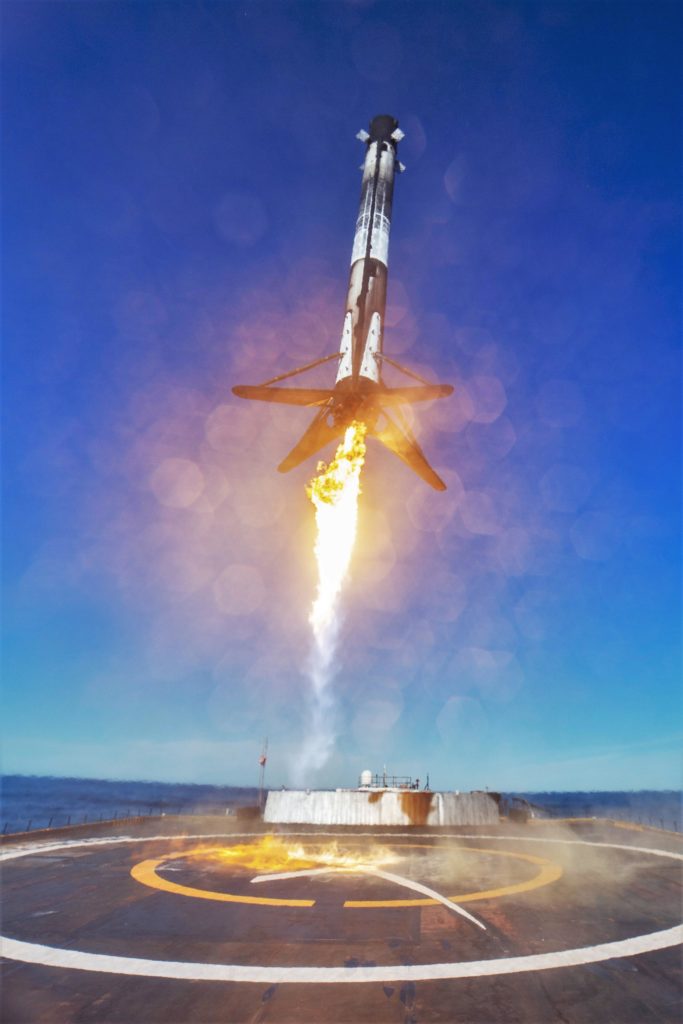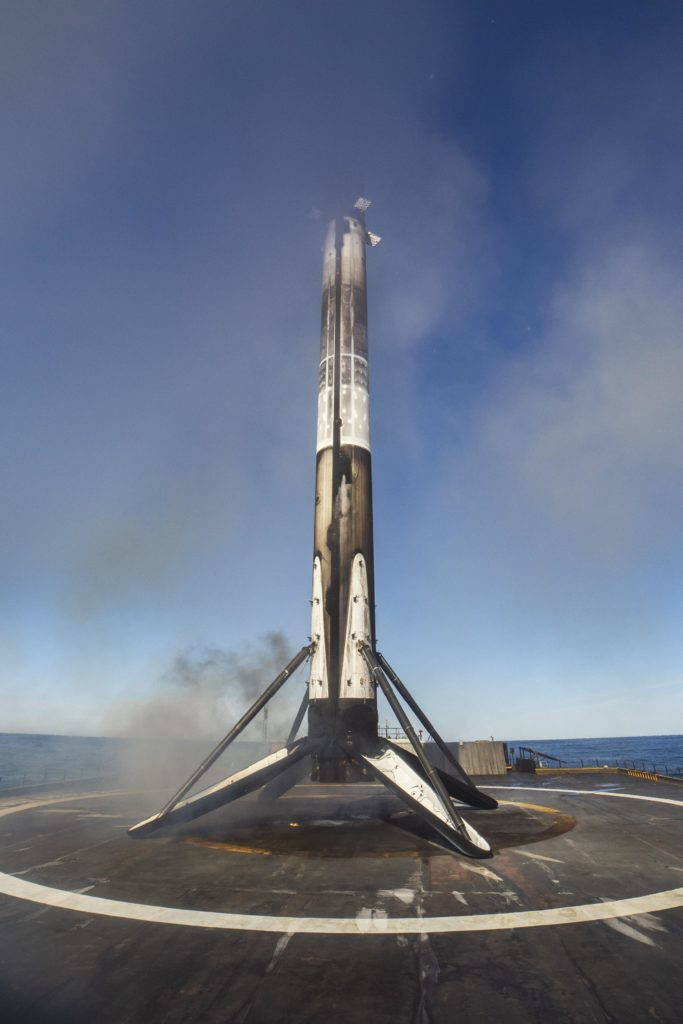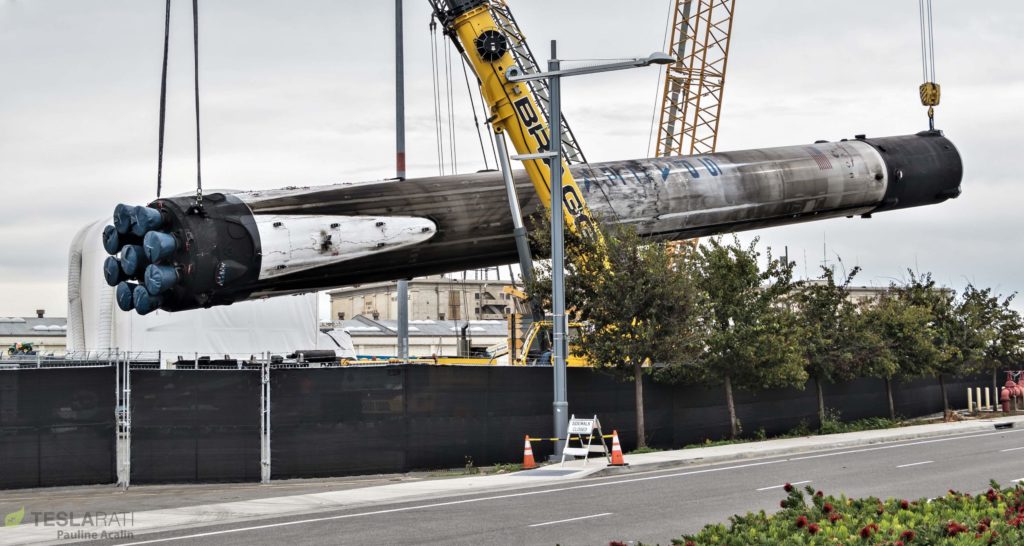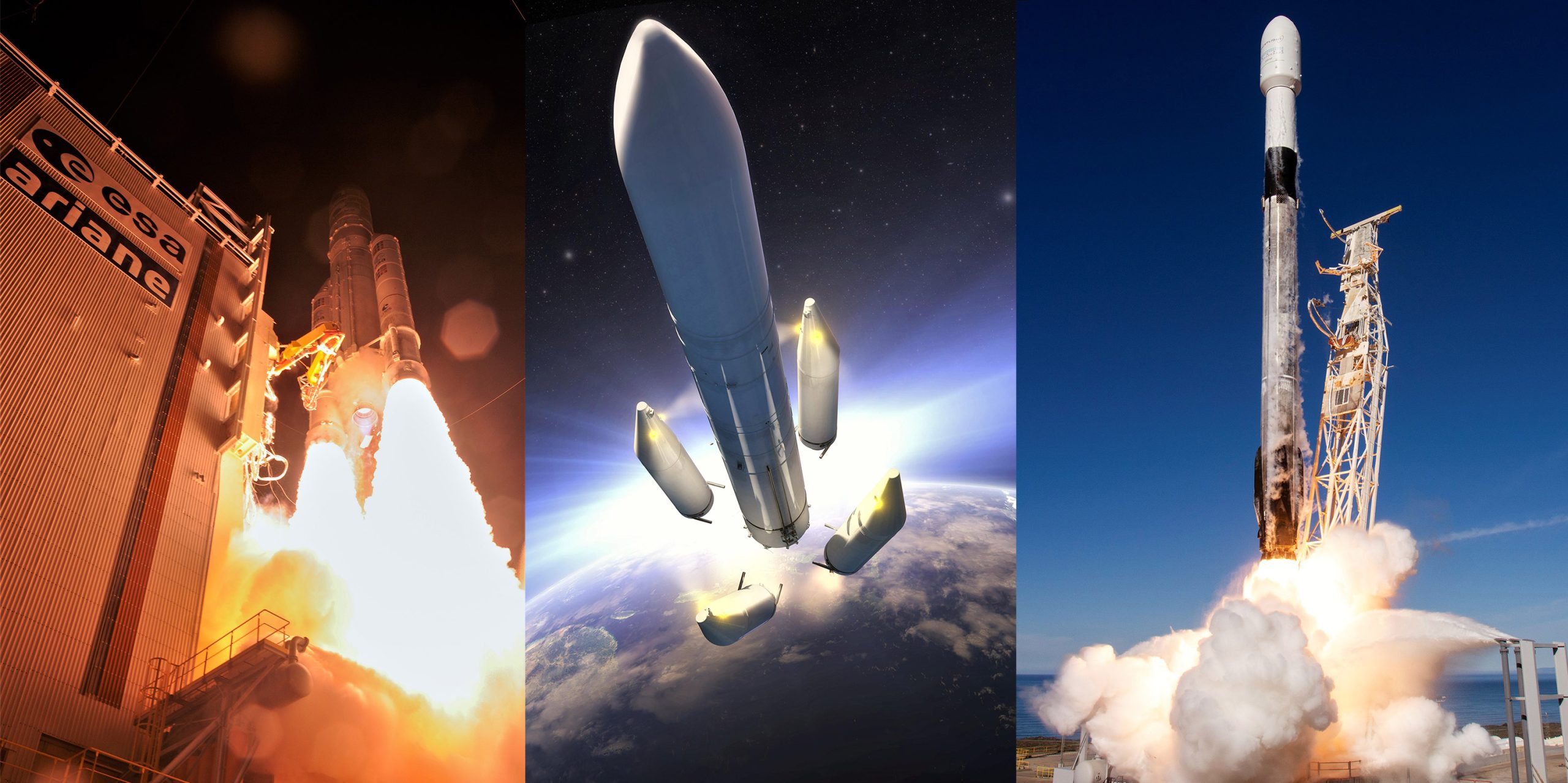
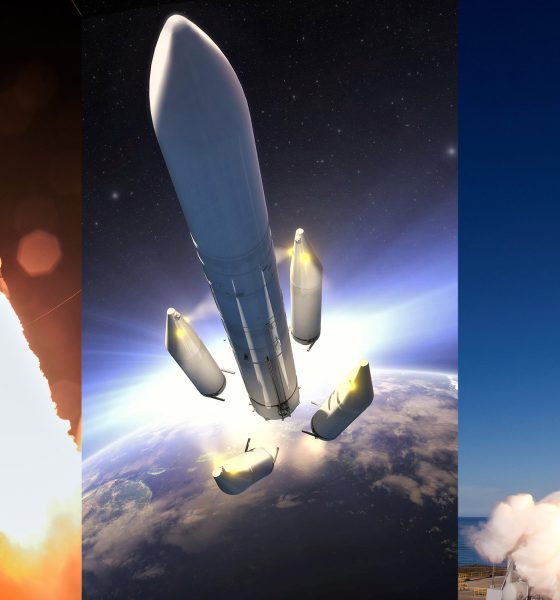
SpaceX
SpaceX competitor Arianespace criticized for lackluster response to Falcon 9’s success
Best known for the commercial success of its Ariane 5 workhorse rocket, European aerospace cooperative Arianespace was heavily critiqued in the latest annual report from France’s Cour des comptes (Court of Auditors) for what is perceived as an unsustainable and overly cautious response to the swift rise of SpaceX’s affordable and reusable Falcon 9 rocket.
The Ariane 6 rocket is at least a year from launch, but already French auditors are asking how it's going to compete with SpaceX.https://t.co/7jCpGBrSXx
— Eric Berger (@SciGuySpace) February 6, 2019
First spotted and discussed by Ars Technica’s Eric Berger, the French auditor’s 2019 report featured a full volume – 1 of 30 – dedicated to Ariane 6, a prospective next-gen Arianespace rocket selected for development by the EU in 2014. Despite the fact that Ariane 6 is at least a full year away from its first launch, Cour des comptes is already questioning the rocket’s ability to successfully make headway into an increasingly competitive market, competition that has already had a direct and tangible impact on Arianespace’s Ariane 5 launch vehicle.
“More than 50% of Falcon 9’s lifetime launches occurred in the last ~12% (24 months) of the rocket’s operational career.”
While other competitors certainly do exist, the fact remains that that said increase in launch market competition can be almost singlehandedly attributed to the rapid entrance of SpaceX’s Falcon 9 rocket onto the commercial launch scene. Despite major stumbles in 2015 and 2016 as a result of Falcon 9’s CRS-7 and Amos-6 failures, SpaceX appears to have dealt with the organizational faults that allowed them to occur, culminating in an auspicious launch cadence over the course of 2017 and 2018. While Falcon 9 has technically been flying since mid-2010, a full 38 of the rocket’s 64 successful launches were completed in the last 24 months, meaning that more than 50% of Falcon 9’s launches have occurred in the last ~12% of the rocket’s operational life.
Critically, a number of European nations settled on Ariane 6 as the successor to Ariane 5 in 2014, at which point Falcon 9 had launched just 13 times (7 times commercially) and SpaceX was more than 12 months away from its first successful rocket recovery and ~30 months from its first commercial reuse. To the credit of Arianespace and the EU nations that supported the prospective Ariane 5 successor, Ariane 6 may have actually been able to reliably compete with Falcon 9’s pricing if it had begun launching within 12-24 months of the 2014 decision to build it and if SpaceX had simply sat on its laurels and ended development programs.
“This new launcher does not constitute a sustainable response in order to be competitive in a commercial market in stagnation,” the auditor’s report states. The Ariane 6 rocket design is too “cautious,” according to the report, relying on mostly traditional technologies.
— Eric Berger (@SciGuySpace) February 6, 2019
Coasting on the race track
Of course, neither of those prerequisites to Ariane 6’s success occurred. SpaceX successfully reused the same Falcon 9 booster three times in just six months by the end of 2018, while Falcon Heavy is set to attempt its first two operational launches just a few months from now. Ariane 6 is still targeting a launch debut no earlier than (NET) 2020, while a handful of extremely limited reusable rocket R&D programs continue to limp towards nebulous targets with minimal funding. Meanwhile, thanks to Arianespace’s French heritage and the major financial support of French space agency CNES, Cour des comptes is in the right to be highly critical of a ~$3.9B rocket development program likely to cost France at least $600M before the first launch.
- SpaceX has now been routinely reusing Falcon 9 rockets on commercial missions for nearly two years. (SpaceX)
- As of January 2019, flight-proven Falcon 9 boosters have performed 19 commercial launches since March 2017. (SpaceX)
- Nearly 60% of SpaceX’s 2018 launches were flown on flight-proven Falcon 9 boosters. (SpaceX)
- Falcon 9 B1046 became the first SpaceX booster to launch three separate times in early-December 2018. (Pauline Acalin)
Once Ariane 6 is ready to launch, it’s aspirational pricing will all but guarantee an inability to compete on an even global playing field. Divided into two versions, A62 and A64, Ariane 6 will cost at least 75 million Euros (~$85M) for performance equivalent to SpaceX’s Falcon 9 in its reusable configuration (base price: $62M), while the heavier A64 variant – capable of placing two heavy satellites (11,500 kg) into geostationary transfer orbit – will cost at least 90 million Euros (~$102M) per launch. Admittedly, $102M to launch a duo of large geostationary satellites would be easily competitive with Falcon 9 with per-customer costs around $50M, but this only holds true if the imminent commercial introduction of Falcon Heavy (list price: $90M) is ignored.
However, the market for large geostationary satellites has plummeted into the ground in the last two years, over the course of which just 12 have been ordered. Arianespace thus faces a conundrum where its cheaper Ariane 62 rocket is already too expensive to compete commercially and the potentially competitive Ariane 64 variant is only competitive for a commercial launch market that has withered to barely a third of its nominal demand in just two years time. Acknowledged by France’s auditors (and noted by Mr. Berger), the most probable outcome for Ariane 6 is one in which the very existence of the rocket will be predicated upon continual annual subsidies from the European Space Agency (ESA) in order to make up for the rocket’s inability to sustain commercial orders beyond a handful of discounted shoo-in contracts.
Check out Teslarati’s newsletters for prompt updates, on-the-ground perspectives, and unique glimpses of SpaceX’s rocket launch and recovery processes!

News
SpaceX shades airline for seeking contract with Amazon’s Starlink rival

SpaceX employees, including its CEO Elon Musk, shaded American Airlines on social media this past weekend due to the company’s reported talks with Amazon’s Starlink rival, Leo.
Starlink has been adopted by several airlines, including United Airlines, Qatar Airways, Hawaiian Airlines, WestJet, Air France, airBaltic, and others. It has gained notoriety as an extremely solid, dependable, and reliable option for airline travel, as traditional options frequently cause users to lose connection to the internet.
Many airlines have made the switch, while others continue to mull the options available to them. American Airlines is one of them.
A report from Bloomberg indicates the airline is thinking of going with a Starlink rival owned by Amazon, called Leo. It was previously referred to as Project Kuiper.
American CEO Robert Isom said (via Bloomberg):
“While there’s Starlink, there are other low-Earth-orbit satellite opportunities that we can look at. We’re making sure that American is going to have what our customers need.”
Isom also said American has been in touch with Amazon about installing Leo on its aircraft, but he would not reveal the status of any discussions with the company.
The report caught the attention of Michael Nicolls, the Vice President of Starlink Engineering at SpaceX, who said:
“Only fly on airlines with good connectivity… and only one source of good connectivity at the moment…”
CEO Elon Musk replied to Nicolls by stating that American Airlines risks losing “a lot of customers if their connectivity solution fails.”
American Airlines will lose a lot of customers if their connectivity solution fails
— Elon Musk (@elonmusk) December 14, 2025
There are over 8,000 Starlink satellites in orbit currently, offering internet coverage in over 150 countries and territories globally. SpaceX expands its array of satellites nearly every week with launches from California and Florida, aiming to offer internet access to everyone across the globe.
Currently, the company is focusing on expanding into new markets, such as Africa and Asia.
News
Tesla hints at Starlink integration with recent patent
“By employing polymer blends, some examples enable RF transmission from all the modules to satellites and other communication devices both inside and outside the vehicle.”

Tesla hinted at a potential Starlink internet terminal integration within its vehicles in a recent patent, which describes a vehicle roof assembly with integrated radio frequency (RF) transparency.
The patent, which is Pub. No U.S. 2025/0368267 describes a new vehicle roof that is made of RF-transparent polymer materials, allowing and “facilitating clear communication with external devices and satellites.”
Tesla believes that a new vehicle roof design, comprised of different materials than the standard metallic or glass elements used in cars today, would allow the company to integrate modern vehicular technologies, “particularly those requiring radio frequency transmission and reception.
Tesla has recently filed a US patent application on integrating RF transparent materials into the roof structure.
“facilitating clear communication with external devices and satellites”
Tesla fleet is getting @Starlink connectivity integration soon. LFG @Tesla @elonmusk… pic.twitter.com/bLa8YtPLd1
— Chansoo Byeon (@Chansoo) December 9, 2025
Instead of glass or metallic materials, Tesla says vehicles may benefit from high-strength polymer blends, such as Polycarbonate, Acrylonitrile Butadiene Styrene, or Acrylonitrile Styrene Acrylate.
These materials still provide ideal strength metrics for crashworthiness, stiffness for noise, vibration, and harshness control, and are compliant with head impact regulations.
They would also enable better performance with modern technologies, like internet terminals, which need an uninterrupted signal to satellites for maximum reception. Tesla writes in the patent:
“By employing polymer blends, some examples enable RF transmission from all the modules to satellites and other communication devices both inside and outside the vehicle.”

One of the challenges Tesla seems to be aware of with this type of roof design is the fact that it will still have to enable safety and keep that at the forefront of the design. As you can see in the illustration above, Tesla plans to use four layers to increase safety and rigidity, while also combating noise and vibration.
It notes in the patent that disclosed examples still meet the safety requirements outlined in the Federal Motor Vehicle Safety Standards (FMVSS).
Starlink integrated directly into Tesla vehicles would be a considerable advantage for owners. It would come with a handful of distinct advantages.
Initially, the inclusion of Starlink would completely eliminate cellular dead zones, something that is an issue, especially in rural areas. Starlink would provide connectivity in these remote regions and would ensure uninterrupted service during road trips and off-grid adventures.
It could also be a critical addition for Robotaxi, as it is crucial to have solid and reliable connectivity for remote monitoring and fleet management.
Starlink’s growing constellation, thanks to SpaceX’s routine and frequent launch schedule, will provide secure, stable, and reliable internet connectivity for Tesla vehicles.
Although many owners have already mounted Starlink Mini dishes under their glass roofs for a similar experience, it may be integrated directly into Teslas in the coming years, either as an upgrade or a standard feature.
Investor's Corner
SpaceX IPO is coming, CEO Elon Musk confirms
However, it appears Musk is ready for SpaceX to go public, as Ars Technica Senior Space Editor Eric Berger wrote an op-ed that indicated he thought SpaceX would go public soon. Musk replied, basically confirming it.
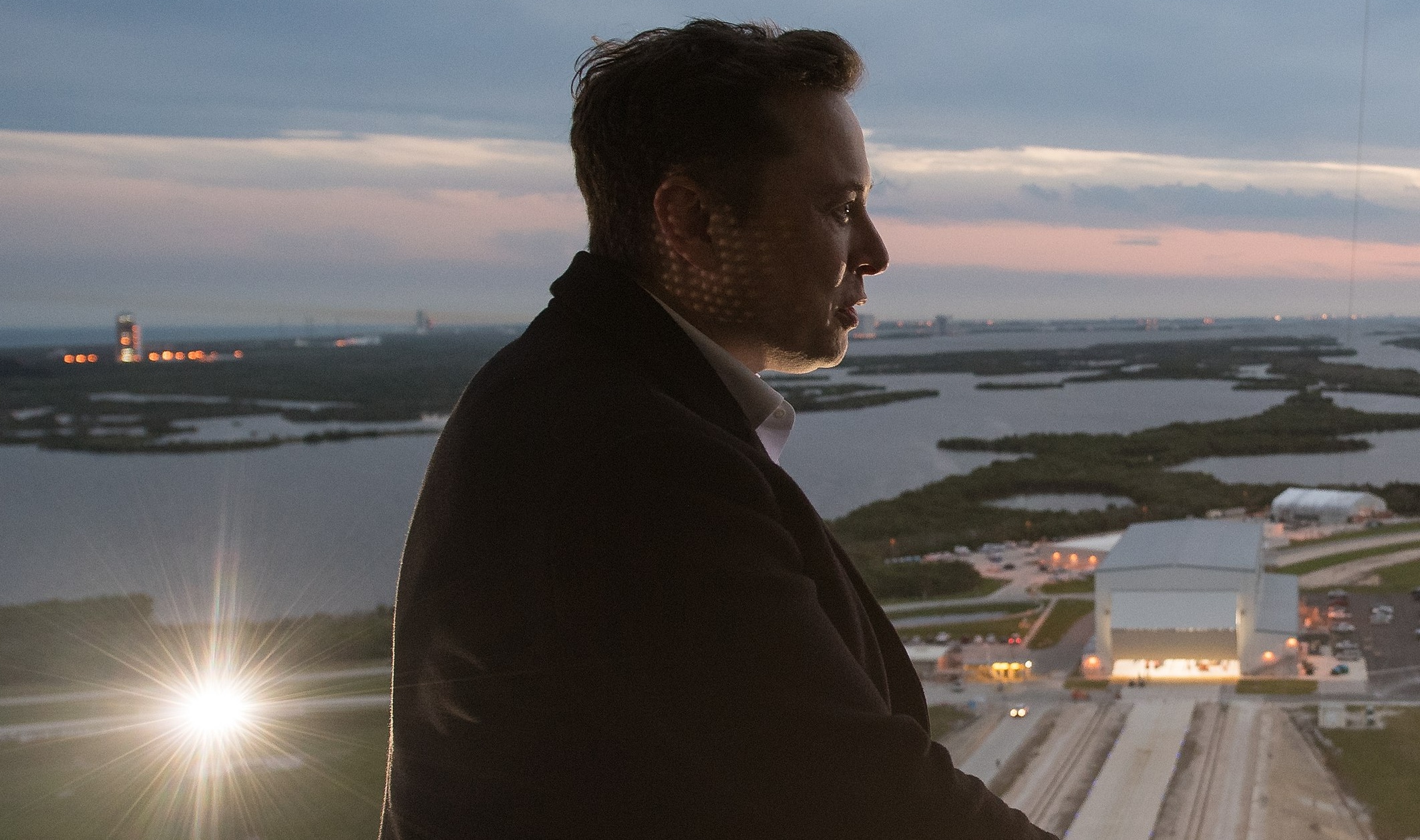
Elon Musk confirmed through a post on X that a SpaceX initial public offering (IPO) is on the way after hinting at it several times earlier this year.
It also comes one day after Bloomberg reported that SpaceX was aiming for a valuation of $1.5 trillion, adding that it wanted to raise $30 billion.
Musk has been transparent for most of the year that he wanted to try to figure out a way to get Tesla shareholders to invest in SpaceX, giving them access to the stock.
He has also recognized the issues of having a public stock, like litigation exposure, quarterly reporting pressures, and other inconveniences.
However, it appears Musk is ready for SpaceX to go public, as Ars Technica Senior Space Editor Eric Berger wrote an op-ed that indicated he thought SpaceX would go public soon.
Musk replied, basically confirming it:
As usual, Eric is accurate
— Elon Musk (@elonmusk) December 10, 2025
Berger believes the IPO would help support the need for $30 billion or more in capital needed to fund AI integration projects, such as space-based data centers and lunar satellite factories. Musk confirmed recently that SpaceX “will be doing” data centers in orbit.
AI appears to be a “key part” of SpaceX getting to Musk, Berger also wrote. When writing about whether or not Optimus is a viable project and product for the company, he says that none of that matters. Musk thinks it is, and that’s all that matters.
It seems like Musk has certainly mulled something this big for a very long time, and the idea of taking SpaceX public is not just likely; it is necessary for the company to get to Mars.
The details of when SpaceX will finally hit that public status are not known. Many of the reports that came out over the past few days indicate it would happen in 2026, so sooner rather than later.
But there are a lot of things on Musk’s plate early next year, especially with Cybercab production, the potential launch of Unsupervised Full Self-Driving, and the Roadster unveiling, all planned for Q1.
